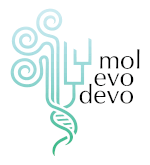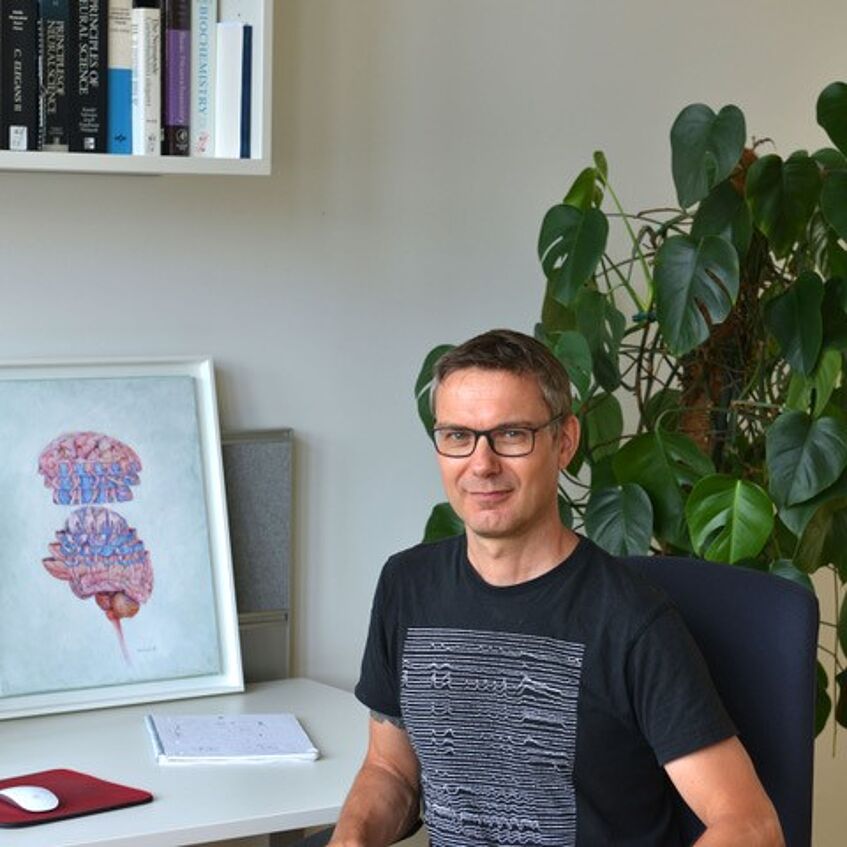Research Groups

I am interested in understanding how molecular mechanisms regulating animal body axes evolved. To find this out, I am using an excellent experimental model, the sea anemone Nematostella vectensis. It belongs to Cnidaria, a phylum consisting of morphologically simply organized diploblastic organisms, which occupies a crucial phylogenetic position as a sister group to all Bilateria Read more...
Prof. Thomas Hummel
Vice Head of Department of Neurosciences and Developmental Biology
professor for Neurobiology
Vice Director of Studies: Psychology, Cognition, Behaviour, and Neuroscien
Director of Doctoral Studies
BioSketch
All animals rely on selective information from the external world received by highly specialized sensory neurons. Research at the Department of Neurobiology is dedicated to the understanding of the Sensory System development and function using various arthropod model organisms.
In a molecular-genetic approach we are studying the developmental control mechanisms underlying the formation of the Drosophila visual and olfactory system
Stem cells, early animal evolution and deep-sea sponge ecology
Our lab is interested in unravelling and understanding the gene regulatory networks that control stem cell functions in sponges. Our work mainly capitalizes on the establishment of a novel sponge regeneration system, which allows us to interrogate stem cell self-renewal and differentiation processes. We are implementing a number of single-cell transcriptomic and genomic techniques, as well as advanced computational methods, to infer gene regulatory interactions. Our research addresses fundamental questions in three main areas: Read more...

Assoz.-Prof. Florian Raible
Stem Cells
Regenerative Plasticity
Biomaterials
Neural regeneration is likely an ancestral feature secondarily lost in mammals and other taxa. Annelid worms modulate regenerative capacity through brain-derived factors. These also orchestrate other developmental features – ranging from bristle shapes to reproductive maturation – and even the time of death. Research into such factors therefore provides unique experimental and mechanistic access to fascinating and fundamental aspects of biology.
Our research combines functional work (knock-outs, transgenics), cell biology, multimodal imaging, cellular profiling (scRNAseq), and physiological and behavioral strategies. Most of our work focuses on the marine bristleworm Platynereis dumerilii that we have helped to push as an experimental system. Our efforts in exploring the bristleworm as a unique system for stem cell biology are embedded in larger Vienna-wide efforts to address the molecular mechanisms of stem cell modulation, differentiation and regeneration. more
Team |

We study major transitions in metazoan evolution from the perspective of the underlying genomic changes. Over the past years, we have contributed to the broader sampling of metazoan genomes, revealing ancestral metazoan and bilaterian genomic architectures and their diversification patterns. While we can trace back many gene families to the ancient metazoan ancestor, we also find many of them linked at both micro- (local gene cluster) and macro-syntenic (chromosomal) levels. The functional significance of most of those linkages during development is unknown. Having a broad phylogenetic focus we aim to (1) characterize and expand our knowledge of conserved and novel gene linkages and their associated (non-coding) elements across metazoans, (2) study their evolutionary dynamics through comparative genomics and modeling approaches, and (3) establishing molecular tools for investigating their role during development and clade-specific innovation. Read more

Prof. Ulrich Technau
Vice Dean of Faculty of Life Sciences
Vice Head of Department of Neurosciences and Developmental Biology
Professor for Developmental Biology
BioSketch

How complex animal body plans could arise in evolution is one of the fundamental questions in biology. We address this question by investigating the underlying genomic, molecular and developmental processes that led to the diversification of animal body plans. We use cnidarians (jellyfish, corals and anemones) as model organisms to understand the evolution of key bilaterian features: bilaterality, central nervous systems and three germ layers. Read more...

Prof. Kristin Tessmar-Raible
Decoding Time information from sun and moon
Chronobiology
Biology of light and photoreceptors
Evolution
SFB F78 Neural Stem Cell Modulation
Alfred-Wegener Institute, Section of Polar and Marine Research
Marine Chronobiology at University of Oldenburg
Lab news on our Bluesky profile
Since its beginnings, life has been exposed to the regular environmental cycles caused by sun and moon, requiring adjustments of physiology and behavior. While sun(light)-dependent chronobiology has been studied in great detail, moonlight has been largely neglected for its role on animals. Especially for the marine environment – considered to be the cradle of evolution – a rich body of literature describes endogenous organismal rhythms that are not linked to the solar, but to the lunar cycle. These rhythms have considerable impact, ranging from behavioral and physiological control to ecosystem organization. As the origin of circalunar timing mechanisms likely predates the conquest of land, the underlying molecular oscillators might still be involved in physiological and behavioral cycles of several terrestrial animals, including birds and humans. more
In the Zimmer lab, we are interested in how neural network dynamics in the brain represent sensory information and perform computations to generate decisions and subsequent behaviors. Moreover, we aim to explain fundamental properties of neuronal circuits, for example the need to sleep. These are key problems in neuroscience, each of which have alone challenged worldwide communities of experts for decades. We, however, propose that a holistic approach should be undertaken to understand these functions in their full context. Read more





